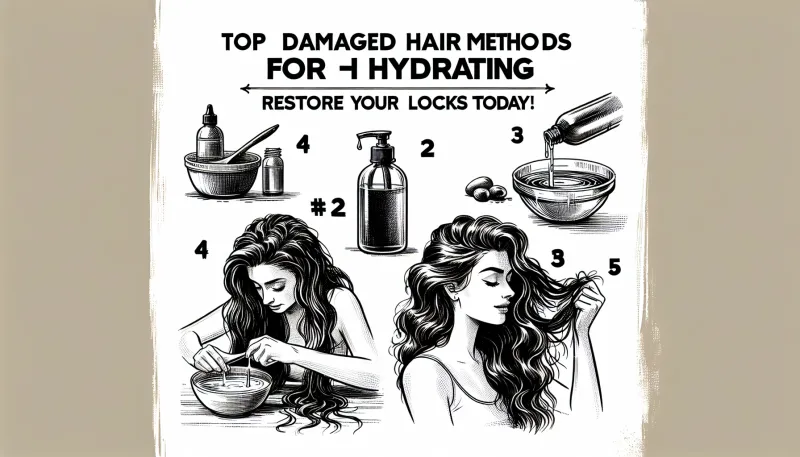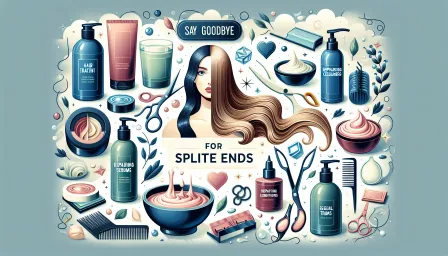Top Damaged Hair Methods for Hydration: Restore Your Locks Today!

Discover the top methods for hydrating damaged hair and restoring your locks to their former glory. Our comprehensive guide offers expert tips and solutions for healthier, shinier hair.
Having dry, brittle, or damaged hair can be incredibly frustrating and often leads to a never-ending search for effective hydration methods. Fortunately, with the right techniques and products, you can restore your locks to their former glory. This article explores the top damaged hair methods for hydration, offering expert tips and solutions to help you achieve healthier, shinier hair.
Understanding Hair Damage
Before diving into the best hydration methods, it's essential to understand what causes hair damage. Several factors contribute to the deterioration of hair health, including:
- Excessive heat styling (blow dryers, curling irons, flat irons)
- Chemical treatments (coloring, bleaching, perming)
- Environmental factors (sun exposure, pollution)
- Mechanical damage (over-brushing, tight hairstyles)
- Poor diet and inadequate hydration
Recognizing these factors can help you avoid further damage and adopt better hair care practices.
Top Damaged Hair Methods for Hydration
1. Deep Conditioning Treatments
Deep conditioning treatments are a cornerstone of hair hydration. These treatments penetrate the hair shaft, restoring moisture and providing essential nutrients. Opt for deep conditioners containing ingredients like keratin, argan oil, or shea butter. Use them once a week for best results.
2. Hydrating Hair Masks
Hair masks offer intensive hydration and repair. Ingredients to look for in hydrating masks include avocado oil, coconut oil, and aloe vera. Apply a mask to damp hair and leave it on for 20-30 minutes before rinsing thoroughly. For an extra boost, consider leaving it on overnight.
3. Leave-In Conditioners
Leave-in conditioners are a great way to maintain moisture throughout the day. They provide an additional layer of protection and hydration without weighing down your hair. Look for products with lightweight, hydrating ingredients such as glycerin and panthenol.
4. Reduce Heat Styling
Excessive heat styling can severely damage your hair. Reduce the use of heat-based tools, and always apply a heat protectant spray before styling. Opt for air-drying whenever possible and explore heat-free styling methods such as braids or twists.
5. Regular Trims
Split ends and breakage can exacerbate the appearance of dry and damaged hair. Regular trims every 6-8 weeks help maintain healthy hair by removing damaged ends, allowing for better moisture retention.
6. Scalp Care
A healthy scalp is essential for hydrated hair. Regular scalp massages stimulate blood flow and promote healthy hair growth. Use gentle, hydrating scalp products and avoid harsh shampoos that can strip natural oils.
7. Hydrating Oils
Oils such as argan oil, coconut oil, and jojoba oil are excellent for sealing in moisture and protecting hair from environmental damage. Apply a small amount to damp hair, focusing on the ends, and style as usual.
8. Proper Hair Washing Techniques
Over-washing your hair can strip it of natural oils, leading to dryness. Aim to wash your hair 2-3 times a week with a sulfate-free shampoo. Follow up with a hydrating conditioner, focusing on the mid-lengths and ends.
9. Healthy Diet and Hydration
Internal hydration is just as important as external care. Ensure you're drinking enough water daily and consuming a balanced diet rich in vitamins and minerals. Foods high in omega-3 fatty acids, biotin, and vitamins A, C, and E can significantly improve hair health.
Tailoring Your Hair Care Routine
Everyone's hair is unique, so it's crucial to tailor your hair care routine to your specific needs. Consider factors such as hair type, texture, and level of damage. Experiment with different products and techniques to find what works best for you.
Additionally, consult a professional stylist or dermatologist for personalized recommendations. They can provide insights into your hair's condition and suggest targeted treatments and products.
Conclusion
Dealing with damaged hair can be challenging, but with the right methods for hydration, you can restore your locks to their former glory. From deep conditioning treatments and hydrating masks to proper washing techniques and a healthy diet, there are numerous ways to nourish and hydrate your hair. Remember that consistency is key—make these practices a regular part of your routine for the best results. Say goodbye to dry, brittle hair and hello to healthier, shinier locks!



























